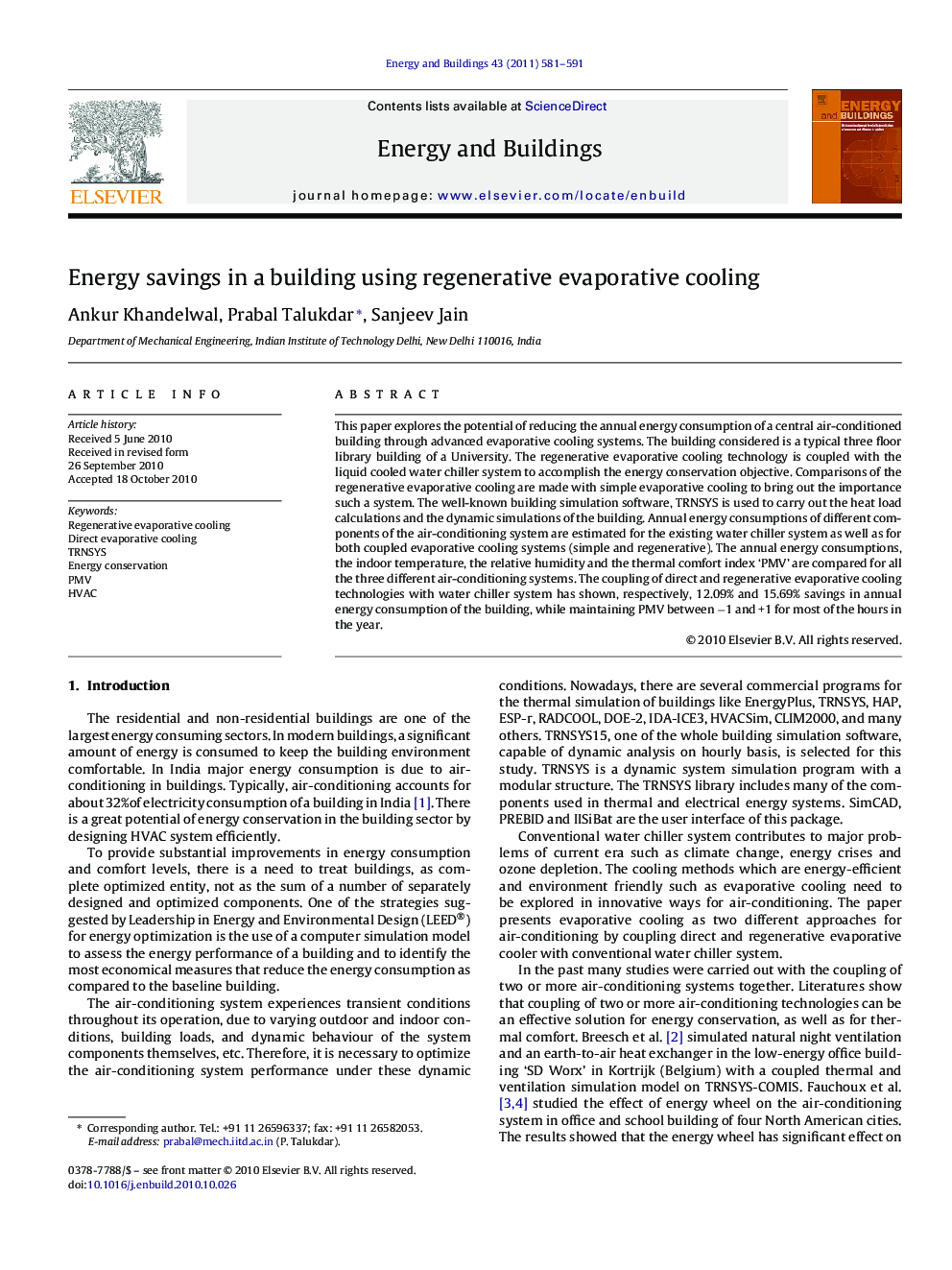| Article ID | Journal | Published Year | Pages | File Type |
|---|---|---|---|---|
| 264417 | Energy and Buildings | 2011 | 11 Pages |
This paper explores the potential of reducing the annual energy consumption of a central air-conditioned building through advanced evaporative cooling systems. The building considered is a typical three floor library building of a University. The regenerative evaporative cooling technology is coupled with the liquid cooled water chiller system to accomplish the energy conservation objective. Comparisons of the regenerative evaporative cooling are made with simple evaporative cooling to bring out the importance such a system. The well-known building simulation software, TRNSYS is used to carry out the heat load calculations and the dynamic simulations of the building. Annual energy consumptions of different components of the air-conditioning system are estimated for the existing water chiller system as well as for both coupled evaporative cooling systems (simple and regenerative). The annual energy consumptions, the indoor temperature, the relative humidity and the thermal comfort index ‘PMV’ are compared for all the three different air-conditioning systems. The coupling of direct and regenerative evaporative cooling technologies with water chiller system has shown, respectively, 12.09% and 15.69% savings in annual energy consumption of the building, while maintaining PMV between −1 and +1 for most of the hours in the year.
